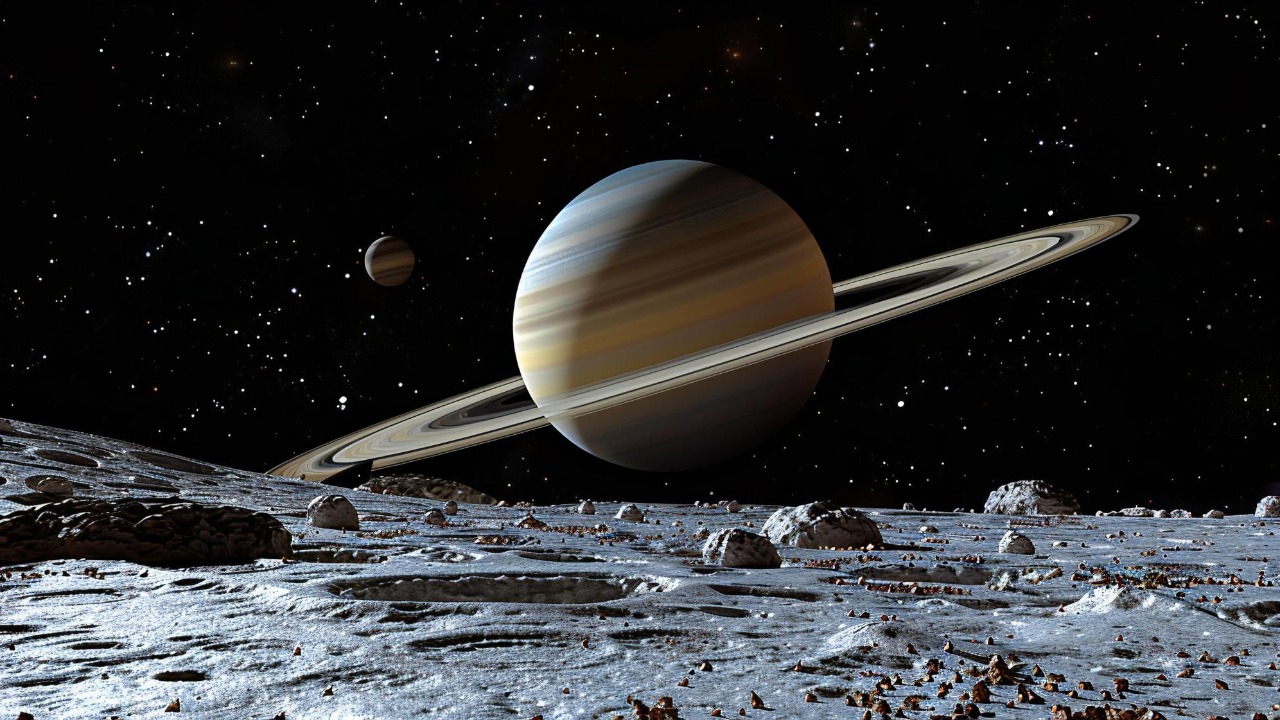
Recent studies of Saturn’s moon Titan have unveiled a surprising twist in the tale of extraterrestrial chemistry. The icy surface of Titan hosts molecular combinations that defy established rules of chemistry, such as the coexistence of nitriles and water ice. This groundbreaking discovery, made in October 2025, challenges our understanding of chemical reactivity in extremely cold environments and opens new avenues for the search for life beyond Earth.
The Discovery on Titan’s Icy Surface
According to NASA’s study, Titan’s icy surface is a playground for unexpected molecular combinations. Data from the Cassini spacecraft’s Visual and Infrared Mapping Spectrometer revealed that the moon’s icy dunes house mixtures of nitriles and water ice, a phenomenon previously thought impossible due to the low reactivity of these compounds at Titan’s frigid temperatures (Asianet News). This discovery contradicts a fundamental rule of chemistry concerning molecular stability, suggesting that these “impossible” pairings can exist stably in Titan’s hazy atmosphere and icy surface.
Understanding the Broken Chemistry Rule
The rule in question involves the thermodynamic barriers that prevent nitriles from interacting with water ice under the extreme conditions of Titan, which include temperatures around -179°C and low pressure. Traditional chemistry models predict that such molecules cannot form stable bonds without high energy inputs, yet Titan’s environment defies this expectation (SciTechDaily). The finding unveils “impossible” molecular combinations that exist stably, challenging foundational principles of organic chemistry in cold extraterrestrial settings.
NASA’s Role in the Analysis
NASA’s analysis, published in October 2025, used spectroscopic data from the Cassini mission to identify these anomalous mixtures on Titan. The study underscores how Titan’s unique chemistry—driven by its nitrogen-rich atmosphere and methane lakes—enables reactions unseen on Earth (IFLScience). Researchers from NASA’s Jet Propulsion Laboratory interpreted the data to confirm the presence of nitrile-water complexes, overturning prior assumptions.
Unexpected Molecules in Titan’s Environment
On Titan, molecules like hydrogen cyanide (HCN) and other nitriles are mixing with water ice in ways thought chemically unfeasible. These combinations form in Titan’s organic dunes and polar regions, where ultraviolet radiation and cosmic rays may provide the necessary energy despite the cold (The Debrief). The discovery includes specific pairings such as acetonitrile with ice, which persist without breaking apart as predicted by standard models.
Implications for Prebiotic Chemistry
The rule-breaking chemistry on Titan suggests that complex organic molecules can form in icy, low-energy environments, mirroring potential early Earth conditions. This could mean prebiotic building blocks for life emerge more readily in cold outer solar system bodies than previously believed. The findings expand the scope of astrobiology by showing how “impossible” reactions might contribute to the synthesis of amino acids or nucleotides (IFLScience).
Broader Meaning for Alien Life Searches
The discovery on Titan implies that alien life could arise in diverse chemical regimes, including those with non-aqueous solvents like liquid methane. It challenges Earth-centric views of biochemistry, suggesting habitability on worlds with broken chemistry rules might be more common. Future missions, such as NASA’s Dragonfly rotorcraft set for launch in 2028, could probe these sites to test for biosignatures in Titan’s exotic mixtures (Asianet News).